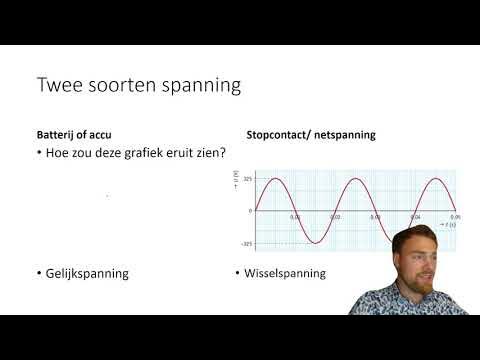KONSEP DASAR KONVERSI ENERGI - DASAR KONVERSI ENERGI
Summary
TLDRThis video provides an in-depth explanation of basic energy conversion concepts. It covers the distinction between renewable and non-renewable energy sources, such as wind, solar, and fossil fuels. The video explores the principles of energy transformation, including mechanical, electrical, and thermal energy. The Law of Conservation of Energy is highlighted, illustrating how energy cannot be created or destroyed, only converted. The video also touches on mechanical energy, work-energy relationships, and biomass energy systems, showing how organic materials can be used to generate electricity. A comprehensive guide for understanding energy dynamics and conversion processes.
Takeaways
- 😀 Energy sources are categorized into two types: renewable (which can be replenished in a short time) and non-renewable (which takes a long time to regenerate).
- 🌊 Renewable energy includes sources like water, wind, and solar power, all of which are sustainable and abundant.
- ⛽ Non-renewable energy sources, like fossil fuels (coal, oil, and natural gas), are finite and take millions of years to form.
- ⚡ Energy conversion refers to the process of changing energy from one form to another, such as converting solar energy into electricity.
- 💡 The law of conservation of energy states that energy cannot be created or destroyed, only transformed from one form to another.
- 🔥 Mechanical energy is the sum of potential and kinetic energy, which can be used in various systems to perform work.
- 🔋 Kinetic energy is energy possessed by a moving object, and its magnitude depends on both the mass and velocity of the object.
- 🌱 Photosynthesis is an example of energy conversion, where sunlight is transformed into chemical energy stored in plants.
- 🚗 The example of a motor vehicle explains energy conversion, where chemical energy in fuel is converted into mechanical energy during combustion.
- 🌍 Biomass energy is derived from organic materials like plants, which can be converted into fuel to generate electricity, with minimal environmental impact.
Q & A
What are the two main categories of energy sources mentioned in the transcript?
-The two main categories of energy sources are renewable energy, which can be replenished in a short time (e.g., water, wind, sunlight), and non-renewable energy, which takes a long time to regenerate and is limited (e.g., oil, coal, natural gas).
What is energy conversion?
-Energy conversion is the process of changing one form of energy into another. This typically involves intermediates, such as converting sunlight into electricity using solar panels or water movement into electricity using a hydropower plant.
What are some examples of renewable energy sources provided in the script?
-Examples of renewable energy sources include water, wind, and sunlight.
Why is oil considered a non-renewable energy source?
-Oil is considered a non-renewable energy source because it is formed from fossilized remains over millions of years and cannot be replenished within a short time frame. Its availability is limited.
What are the key types of energy discussed in the transcript?
-The key types of energy discussed are chemical energy, electrical energy, heat (thermal) energy, light (radiant) energy, and mechanical energy.
What is the Law of Conservation of Energy?
-The Law of Conservation of Energy states that energy cannot be created or destroyed. It can only be transformed from one form to another, but the total amount of energy in an isolated system remains constant.
How is kinetic energy calculated, and what does it depend on?
-Kinetic energy is calculated using the formula Ek = 1/2 mv^2, where 'm' is mass and 'v' is velocity. It depends on both the mass of the object and its velocity.
What is potential energy, and how is it calculated?
-Potential energy is the energy stored in an object due to its position or height. It is calculated using the formula Ep = mgh, where 'm' is mass, 'g' is gravitational acceleration, and 'h' is height.
How does the energy of a ball change when thrown vertically?
-When a ball is thrown vertically, its potential energy is at a maximum at the highest point, while its kinetic energy is zero. As it falls, the potential energy converts into kinetic energy, and at the bottom, its kinetic energy is at a maximum while its potential energy is zero.
What is biomass energy, and how is it used to generate electricity?
-Biomass energy comes from burning organic materials, such as plants, to generate steam. This steam drives turbines connected to generators, producing electricity. Biomass can also be processed into biofuels like ethanol and methane.
Outlines

This section is available to paid users only. Please upgrade to access this part.
Upgrade NowMindmap

This section is available to paid users only. Please upgrade to access this part.
Upgrade NowKeywords

This section is available to paid users only. Please upgrade to access this part.
Upgrade NowHighlights

This section is available to paid users only. Please upgrade to access this part.
Upgrade NowTranscripts

This section is available to paid users only. Please upgrade to access this part.
Upgrade NowBrowse More Related Video

H1.1 Elektriciteit Opwekken 3HAVO

Centrifugal Pump Basics I Definition I Working I Velocity Triangle I Work Done I Head I Efficiency

Materi Pelatihan Pembangkit Listrik Tenaga Uap (PLTU).

Lactic Acid Fermentation | Detailed

Techniques for Solving Energy Problem | Procedure for Solving Material Balance Problem | PE Chemical

Hukum Termodinamika, Bagian 2: Entalpi
5.0 / 5 (0 votes)